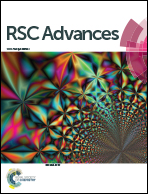Inhibitory effects of UDP-glucuronosyltransferase (UGT) typical ligands against E. coli beta-glucuronidase (GUS)
Abstract
UDP-glucuronosyltransferases (UGTs) and β-glucuronidase (GUS) catalyze entirely distinct metabolism reactions. UGTs are responsible for the glucuronidation of a variety of drugs, endogenous and environmental chemicals, whereas GUS hydrolyzes glucuronides and liberates the parent substrates. Information on the overlap of ligand selectivity between UGT and GUS is essential for exploring the pharmacological or toxicological effects of the inhibitors of these two metabolic enzymes. This study is conducted to test whether UGTs and GUS share common ligands, by investigating the inhibitory effects towards E. coli GUS by a series of UGT typical substrates and inhibitors. Results showed that three typical ligands of UGTs, including two specific substrates (estradiol and trifluoperazine, E2 and TFP) and one selective inhibitor (magnolol, Mag), can inhibit the activity of GUS. Kinetic assays indicated that all the three UGT specific chemicals displayed competitive inhibition, with Ki values of 31.4 (E2), 56.9 (TFP), and 16.6 μM (Mag). Docking studies further revealed that the three chemicals can enter the active sites of GUS by forming contacts with residues Glu-413, Trp-549, Asp-163, Tyr-472, Arg-562, or bound water. Our study indicates that ligand selectivity overlaps between UGTs and GUS, and some chemicals can act as co-inhibitors of these two metabolic enzymes. The pharmacological or toxicological effects of those co-inhibitors require further investigations.



 Please wait while we load your content...
Please wait while we load your content...